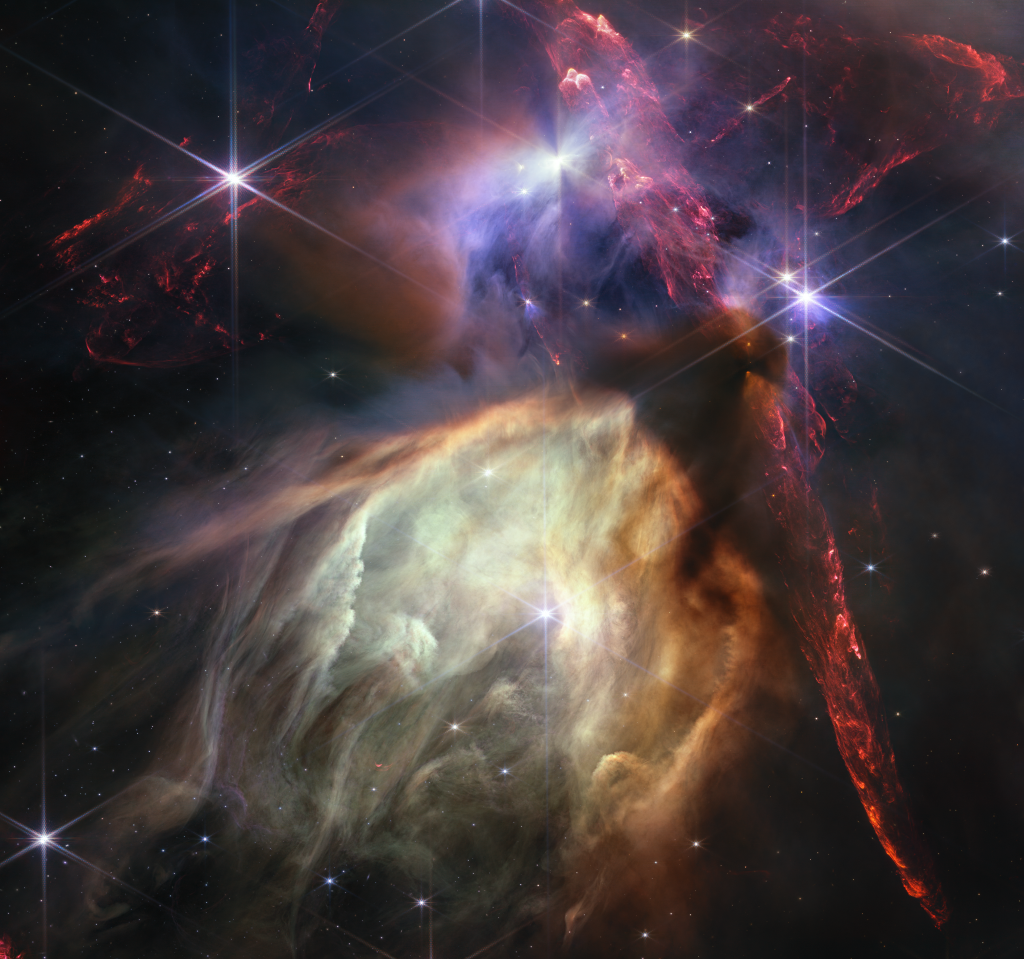2023年7月13日
Webb’s Rho Ophiuchi
Image Credit: NASA, ESA, CSA, STScI, Klaus Pontoppidan (STScI), Processing: Alyssa Pagan (STScI)
Explanation: A mere 390 light-years away, Sun-like stars and future planetary systems are forming in the Rho Ophiuchi molecular cloud complex, the closest star-forming region to our fair planet. The James Webb Space Telescope’s NIRCam peered into the nearby natal chaos to capture this infrared image at an inspiring scale. The spectacular cosmic snapshot was released to celebrate the successful first year of Webb’s exploration of the Universe. The frame spans less than a light-year across the Rho Ophiuchi region and contains about 50 young stars. Brighter stars clearly sport Webb’s characteristic pattern of diffraction spikes. Huge jets of shocked molecular hydrogen blasting from newborn stars are red in the image, with the large, yellowish dusty cavity carved out by the energetic young star near its center. Near some stars in the stunning image are shadows cast by their protoplanetary disks.
Tomorrow’s picture: pixels in space
韦伯望远镜的心宿增四星云
影像提供: NASA, ESA, CSA, STScI, Klaus Pontoppidan (STScI), 影像处理: Alyssa Pagan (STScI)
说明: 距离我们仅有390光年的蛇夫座心宿增四星云复合体,是最邻近地球的恒星形成区,而类太阳恒星及未来的行星系统正形成于其中。韦伯太空望远镜的近红外相机,最近以空前细致的尺度,为这个混乱喧嚣的育婴室拍下了这幅红外光影像。并以这幅刚发布壮丽的宇宙快照,来庆贺韦伯望远镜探索宇宙的第一年任务大获成功。这幅影像呈现心宿增四星云不到1光年的区域及大约50颗年轻恒星。其中较亮的恒星,更带着韦伯望远镜特有的衍射芒。源自新诞生恒星的庞大激震分子氢喷流,在此影像里以红色来呈现,此外,还可见到一个大型的泛黄尘埃空穴,及其中心附近清出这个空穴的活跃年轻恒星。在这幅引人赞叹影像的部分恒星附近,甚至可见到它们的原行星盘所投射的影子。 (Rho Ophiuchi 心宿增四星云)
明日的图片: pixels in space







